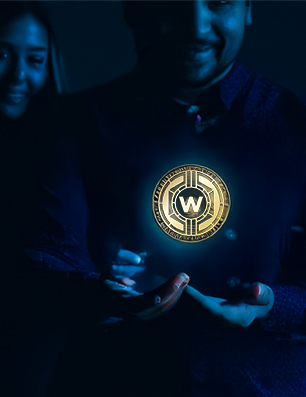- Written by: Nick
- Tue, 24 Aug 2021
- Russian Federation
Many have made the argument that “worthless jpeg’s” are “a bubble”. A common meme in the comment’s of twitter influencers flashing their new pixels is re-posting the picture of the NFT saying “just download it for free.” The obvious rebuttal to that is simple: you cannot sell that “free” jpeg for $100,000, just like you […] The post Why NFT’s Are Not A Bubble appeared first on CryptosRus.
Why NFT’s Are Not A Bubble
Many have made the argument that “worthless jpeg’s” are “a bubble”. A common meme in the comment’s of twitter influencers flashing their new pixels is re-posting the picture of the NFT saying “just download it for free.” The obvious rebuttal to that is simple: you cannot sell that “free” jpeg for $100,000, just like you couldn’t sell a fake Rolex for the price of a real Rolex. You couldn’t sell a fake Picasso for $1 million, and you can’t sell a fake crypto punk for the price of a real one.
How obvious is this? Seemingly very obvious; so much so that people fail to realize it. Each of the 10,000 crypto punks is uniquely identified on the blockchain–the authenticity and immutability of these expensive NFT’s cannot be faked, even by “downloading it for free.”
Think of it like this: you are not buying the image, you are buying the ownership of the image, and that is where the value is derived. So, with that distinction out of the way, the question remains: are NFT’s a bubble? No, wealth itself is a bubble. In fact, 1% of the global adult population are millionaires.
The “digital flex” of NFT’s is creating a new class of luxury spending. According to market data, the global market of luxury goods spending is about $310 billion dollars, this is set to increase to $382 billion by 2025. As we creep closer and closer to a world, or metaverse, where the internet is not an add-on, but the fulcrum of our lives, status symbols will be more and more intertwined with the internet.
The difference between the traditional status symbols of watches, bags and cars vs NFT’s–as Meltem Demir’s from CoinShares puts it–is NFT’s are “open to anyone, anywhere with verifiable scarcity.” You can buy one from your living room, without any permission or roadblocks. (except failed transactions on Eth, maybe).
Moreover, as Metlem from Coinshares put it: “Unlike bags, watches, and shoes, digital status symbols can be fractionalized, enjoy shared ownership, and used as collateral in on-chain financial markets.” Data from Messari below shows the incredible capitalization for NFT’s. For example, novel concept’s devised by DeFi protocols like Yieldly Finance (YLDY), have devised ways. through their no-loss prize pool, to stake their YLDY to earn NFT prizes.
Basically, traditional art is dead, while NFT’s are alive. NFT’s open up doors for engagement and ownership like never before. Think of how powerful NFT’s are through gaming, such as Axis Infinity. These digital, scarce collectibles do not lie on a shelf and collect dust, they are becoming an active, animated part of our reality. Unlike art, they can be transacted easily, with a click of a button, they can be implemented in gaming, music and sports.
Imagine owning a fraction of your favorite artists song? Or, as NBA top shot’s has done, owning a clip of your favorite player posterizing someone. The same people making fun of NFT’s, were the same people making fun of Bitcoin 5 years ago. It all comes down to supply and demand. The market has deemed NFT’s valuable, and so they are–some more than others. The same goes for art, watches, cars and model trains.
The value is not derived intrinsically, but extrinsically, by the masses. You are not “buying a jpeg”, you are buying a crypto-punk. Just like you are not buying “paint and canvas”, you are buying a picasso. This verifiable ownership is the same reason people say about Bitcoin, “no keys, no cheese.” It is ownership of scarcity that brings value, and the value is determined by the market. NFT’s are an intrinsic part of crypto, when you own an NFT that is on the blockchain which you love, that also brings massive value.
It is a way to support your favorite protocol. People love their crypto, and so they’ll love the NFT’s built on their crypto. NFT’s are an entirely new way to look at luxury. One way to look at it is like this: Ethereum is the artist, crypto punks are the art. No one really knows that Larva Labs created crypto-punks. They are a part of Ethereum, they are native to that chain; the ownership is tied to Ethereum. In a way, crypto and blockchain itself drive the value.
So, it is clear that NFT’s are valuable, like other scarce luxuries. Thus, if NFT’s are a bubble, then so is traditional art, luxury goods, and by extension, wealth itself.
The post Why NFT’s Are Not A Bubble appeared first on CryptosRus.






